When to Mulch the Garden and When Not To
Mulch serves important purposes in the garden, but it's essential to know when to use it properly. Join gardening expert Melissa Strauss to discuss the right times to use mulch, as well as those that are less than ideal.
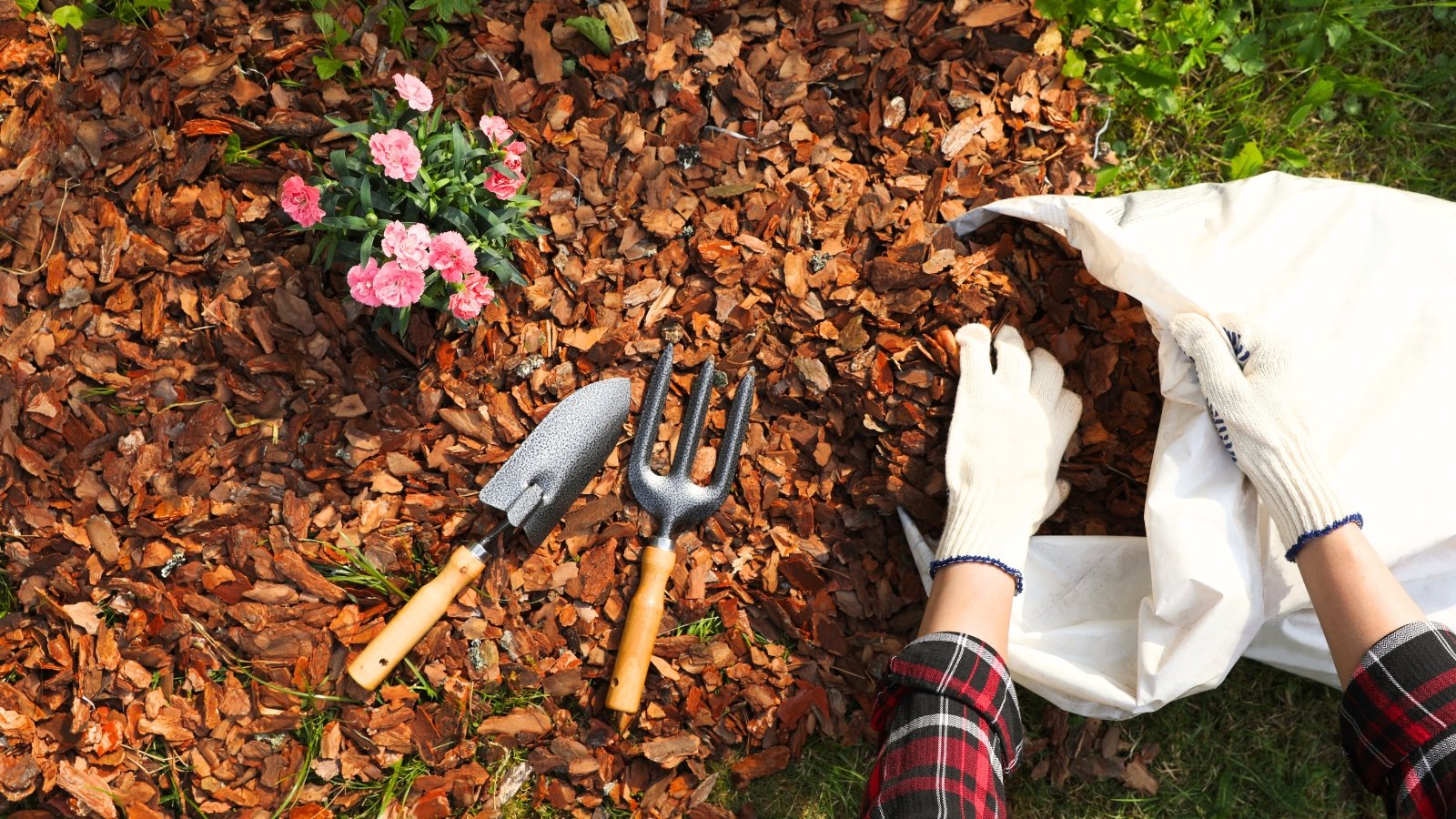
Contents
Mulch is a valuable tool in the garden, with several useful applications. Many of us think of mulch as wood chips that you buy at the nursery or hardware store, but it can come from other materials. You can purchase it in large or small quantities, and there are different times when it is more or less appropriate for use.
Mulching is the practice of covering the ground in your garden with a layer of another material. You can use wood chips, but you can also use straw, compost, grass clippings, leaf litter, and even stone or gravel. The purpose of your use, as well as your budget, will dictate the best material for your garden.
Mulch is great for suppressing weeds, protecting and insulating roots, and improving the health of your soil. It retains moisture in the soil, helps control erosion, and creates a more cohesive appearance, which lends it aesthetic appeal in addition to its functional uses. Let’s take a look at when it’s a good idea to apply it and what times you should avoid it.
When to Apply
The weather and season play a significant role in determining the best time to apply mulch to your beds. It is also important to apply it at the proper time, according to the stage of plant development. Here are some of the best times to use it.
Late Spring
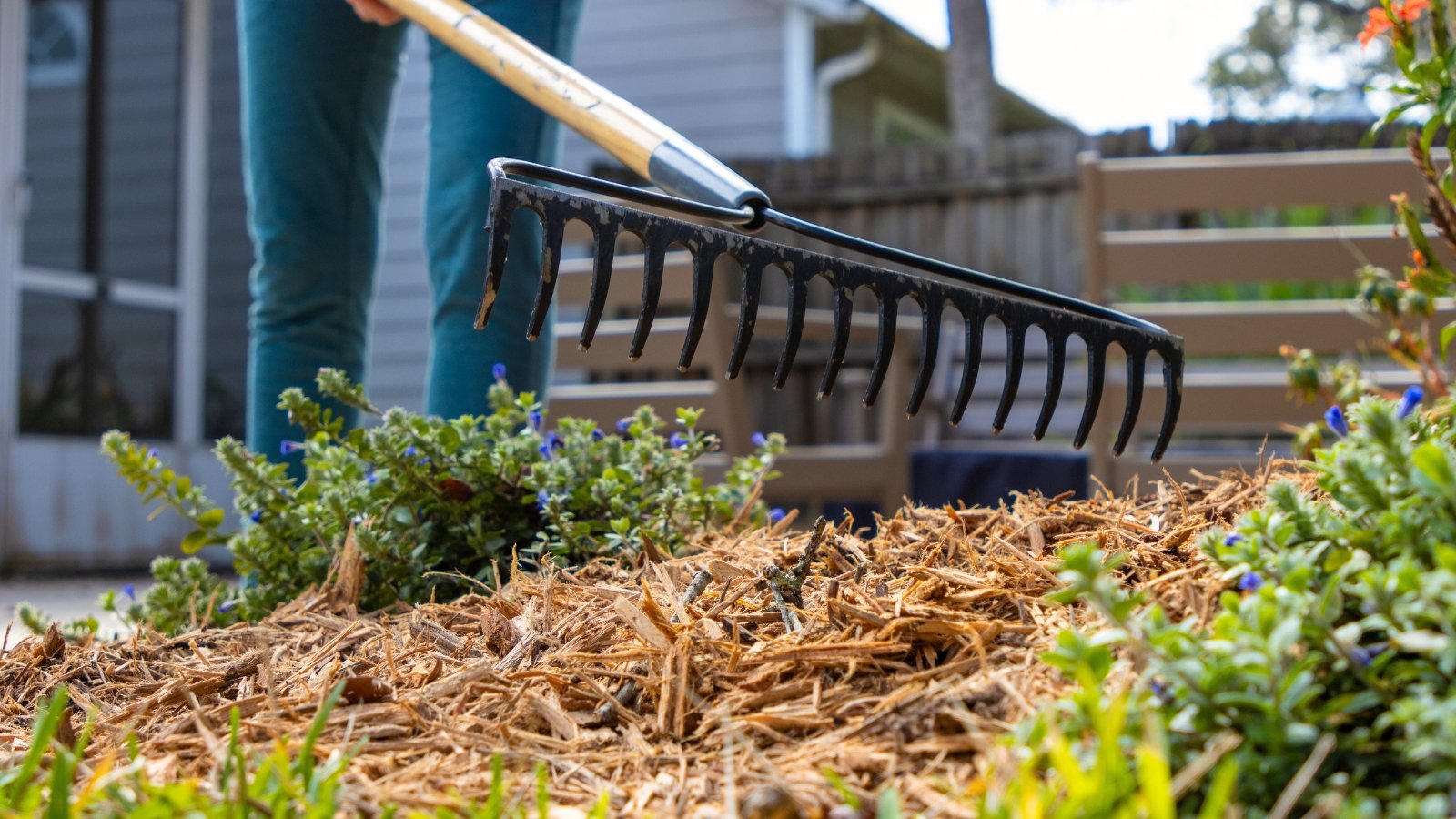
Seasonality plays a significant role in when to mulch your garden. Mid-to-late spring is an ideal time to lay down a fresh layer. Over the winter, mulch breaks down, adding nutrients to the soil. By mid-spring, there’s a good chance that your beds can use a new application.
Don’t act too soon, as you want your perennials to pop back up before you make any moves. Wait until the temperatures rise somewhat, and the ground starts to warm up, so you don’t hinder that process. You don’t want to lock in the cold, or it will slow things down.
If you time it right, this spring application will help to lock moisture into the ground, but not so much that new roots begin to rot. It will also help suppress weeds before they get the chance to take over.
During a Dry Spell
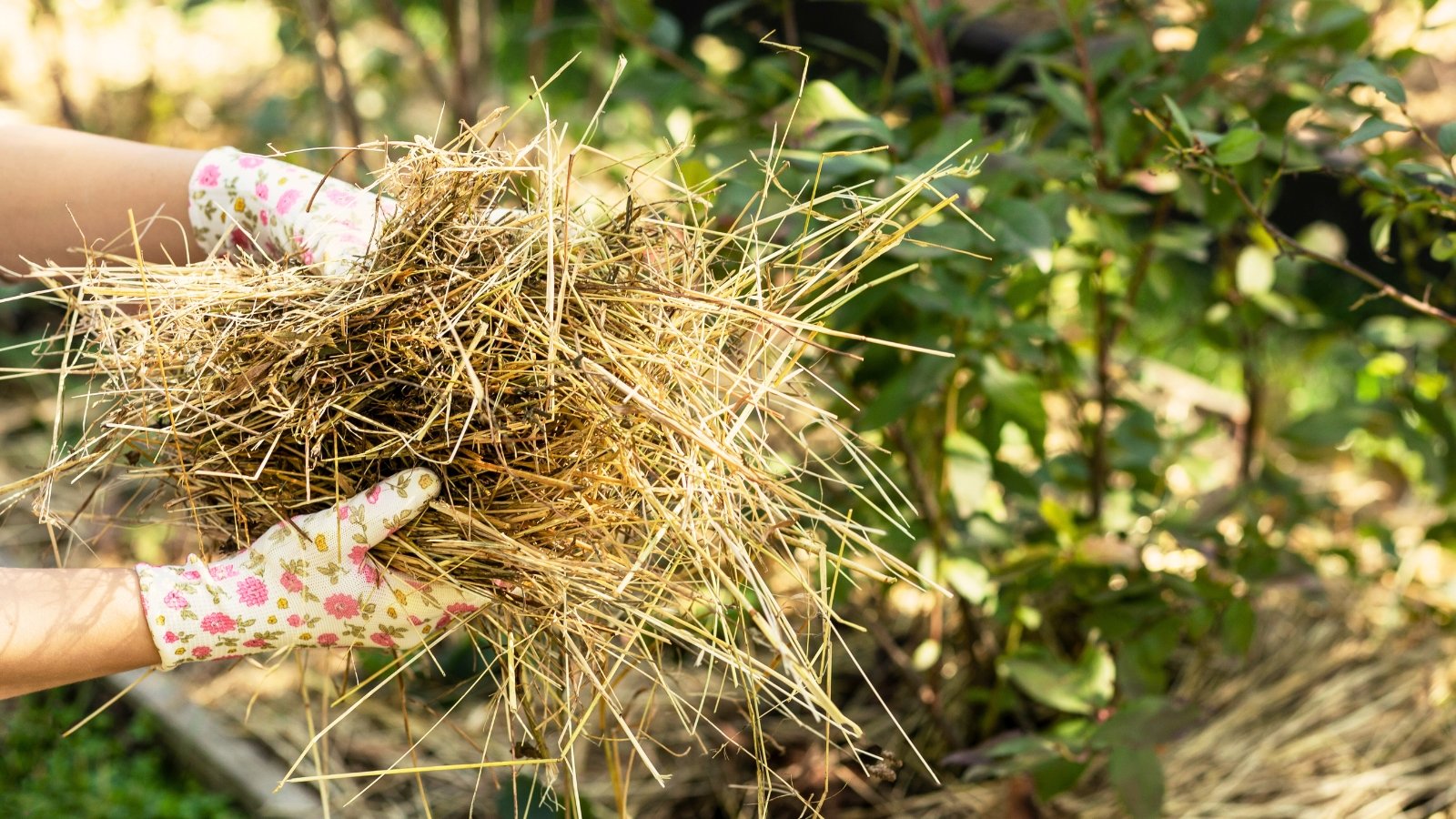
Mulch helps retain moisture around the roots of your plants. It’s especially helpful during dry spells when daily watering seems to perk things up in the morning, but evaporates by midday. Applying it during or before you anticipate a dry spell will save you money on watering and help your plants avoid excessive stress.
This is important all year round, but particularly in the summer. Heat stress, combined with drought stress, is enough to eliminate many of the attractive plants we grow. I’ve seen my garden languish through the summer. Covering the soil will make watering more effective.
After a Light Rain
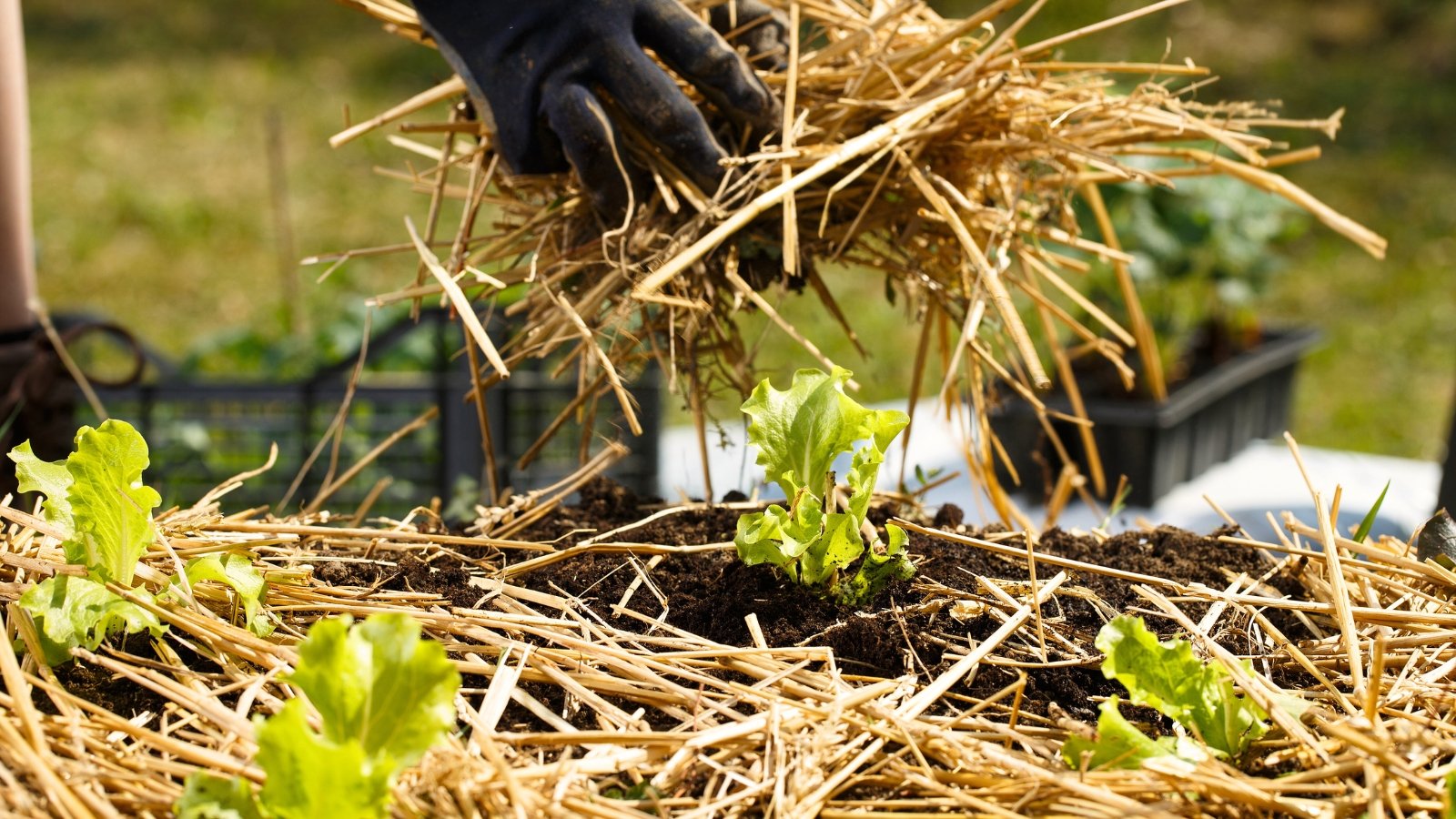
When the soil is moist after a light rain is a great time to mulch your garden. You might as well take advantage of that free moisture and layer on some mulch to lock it in. A bit of moisture also helps to keep your mulch in place and dampen it.
Dry material blows away more easily. Damp material has a better chance of staying put. Ensure the soil drains thoroughly before applying. Avoid applying immediately after a heavy storm.
After Weeding

Covering the soil helps reduce weeds by blocking out the sun and adding weight, which slows their growth and development. If you want to make that hard work last longer, apply it immediately after weeding the garden. Don’t allow the weeds to start peeking back up from the ground; do it right away for the best results.
Fall

The fall is an ideal time to apply to help protect roots during the winter. This is one of the most important applications of the year for several reasons. In warm climates, mid-fall is a good time. Do it earlier in cold climates, before the ground cools.
During winter, when foliage is at a minimum, erosion can be an issue. This leads to roots that are closer to the surface and more vulnerable. It helps prevent frost heaving, which is the upward movement of the soil caused by the expansion of water in the soil when it freezes.
Applying in the fall also helps retain heat in the ground, providing some insulation for the roots. It’s essential to apply while the soil is still warm, so you can lock in that heat. It also holds onto moisture, which is important in the winter. Dry, cold air at the ground-level is damaging to roots.
This layer will help enrich the soil as it breaks down from the freezing and thawing process. It will slow the return of weeds in the spring until you can get new plants in the ground.
Leaf litter is great for this application. You can use your autumn leaves, piling them onto your beds for protection, rather than bagging them and throwing them away. Leaves are also great at acidifying the soil, which many plants need to properly break down and utilize nutrients.
After Fertilizing

Fertilizer can blow around and wash away easily if left exposed to the elements. Applying a layer of material over the top of a granular or organic fertilizer will help hold it in place. Organic material will also help break down your fertilizer, allowing it to absorb better into the ground.
When to Hold Off
There are certainly some times that are less ideal for laying down mulch. Most of these times closely correlate with the right times, so it’s essential to keep them in mind when determining the right time.
Too Early in the Spring

Spring is a great time, but doing so too early in the spring can cause its own set of problems. Just as it holds heat in when applied in the fall, mulch can keep heat out if applied too early in the spring. When the ground remains cool, it slows the growth of your plants and prevents seeds from germinating until later in the spring.
It also holds moisture in, which is good when the weather is warm and dry, but bad when it’s cool and cold. Cool, moist soil is a breeding ground for fungus, which can cause root rot. It also weighs down the soil, which is not conducive to the development of young roots.
Before Weeding

Since mulch suppresses weeds, it’s a good idea to weed ahead of applying. If you lay it on top of weeds, they have already gotten sun exposure and are likely to pop right through faster than you think. Make sure you weed before putting it down to get the full effect of that suppression.
Before Plants Emerge

This issue goes hand in hand with applying mulch to the garden too early in the spring. Plant emergence is a great indicator to time your spring application. Once things start to pop up, you will know that the soil has warmed, and you’re not trapping that cold in.
These materials can also weigh down those early shoots that need to sprout unfettered. The same goes for applying it after planting seeds. If you add a layer of material on top of the soil after sowing seeds, you will make it harder for those seeds to sprout. It blocks sunlight and weighs them down.
Before a Heavy Rain

Before a rain, it may seem like a good time, because you want to lock moisture in. However, a heavy rain is more likely to dislodge your mulch and send it drifting away from the areas where you want to keep it. It’s best to wait until after the rain passes.
When You Expect Heavy Winds
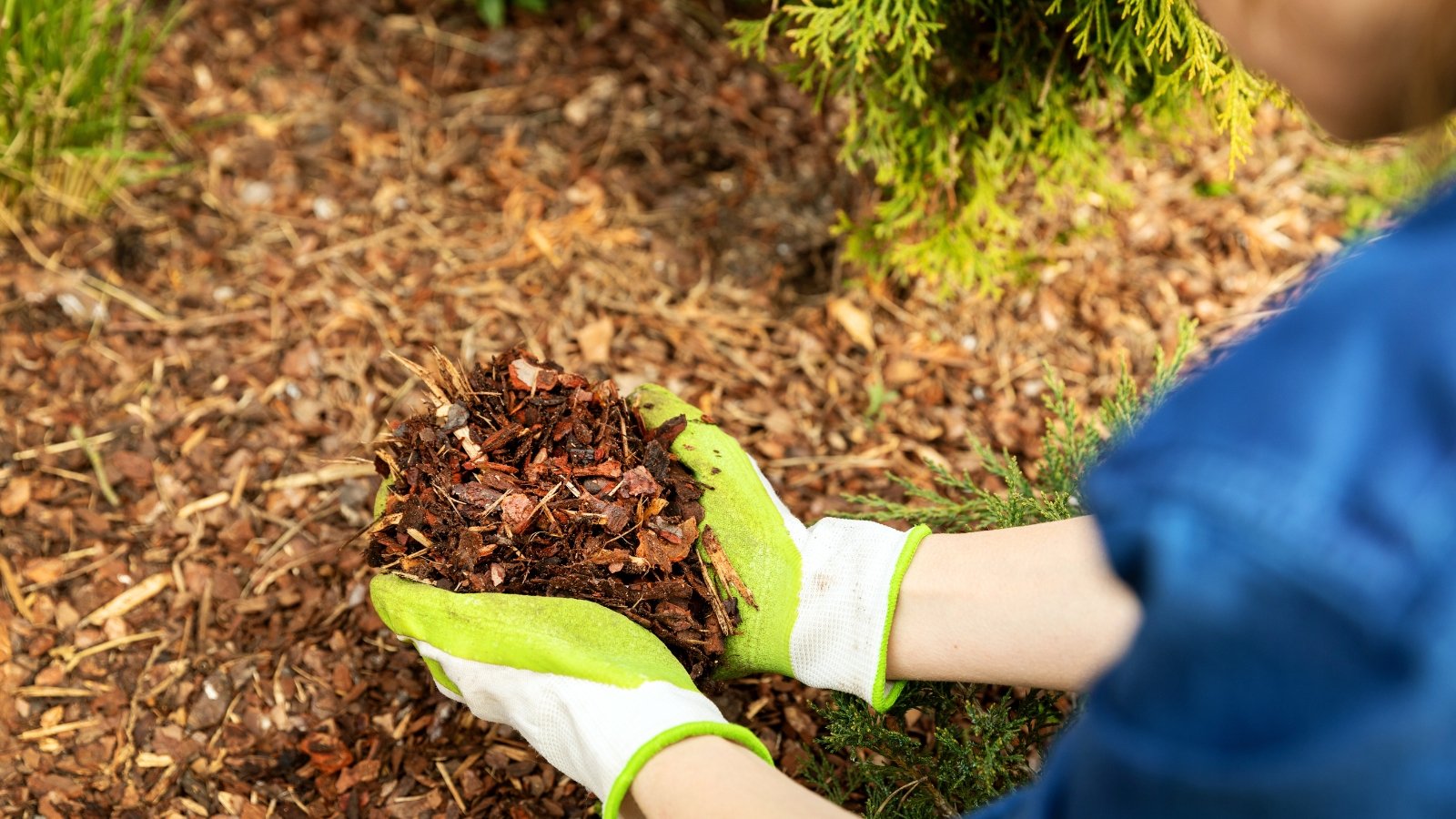
In the same way that a heavy rain can dislodge fresh mulch and send it in all directions, heavy wind can, too. You don’t want to do all that work just to have a heavy wind blow things all over the place. No one wants to spend their time raking mulch back into place. If you expect a windy day, wait until after to lay it down.











